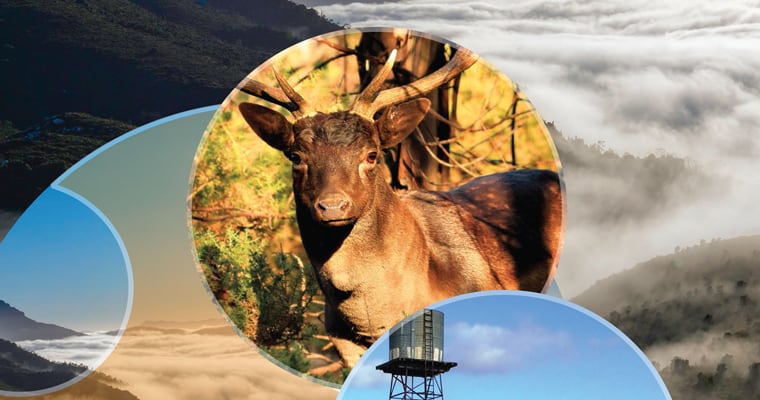The Invasive Species Council is calling on the Minns government to urgently adopt the sweeping reforms recommended in the NSW Invasive Species Management Review, released today by the Natural Resources Commission.
The report finds that invasive species are already costing NSW at least $1.9 billion annually – and could blow out to $29.7 billion each year by 2030 – if current failings in prevention, response and control are not addressed.
Key recommendations include:
- Significant boost to funding for a new 5-year Invasive Species Investment Program.
- A new overarching NSW Invasive Species Management Committee with decision-making powers.
- Investment in regional pest and weed coordinators.
- A new, dedicated unit in the NSW government dedicated to strengthening compliance and enforcement.
- A move away from ad hoc short-term approaches to more strategic cross-tenure and long-term management.
‘This important report released today by the NSW Natural Resources Commission confirms what we’ve long warned – invasive species are already overwhelming our environment, economy and communities, and the current system is not fit for purpose,’ Invasive Species Council CEO Jack Gough said.
‘The Commission has now delivered a clear roadmap to the Premier for reform. The evidence of the systemic failures is undeniable: without major changes, NSW faces an escalating invasive species crisis that will send native wildlife extinct, degrade landscapes and could cost the economy up to $29.7 billion a year by 2030.
‘It’s important that the Minns government responds to this swiftly and gets on with implementing this roadmap for reform, as delay only makes the task harder and more expensive.
‘We strongly support the report’s recommendations, particularly its calls for increased, long-term resourcing and investment, better enforcement powers, and stronger coordination.
‘Central to the effective implementation of this reform roadmap is deep collaboration between the environment and agriculture departments and the Treasury. A siloed response will lead to failure.
‘For too long invasive species management has been characterised by short-term funding cycles, lack of coordination and a lack of strategy. This report must draw a line under that era of failure and be the catalyst for genuine change.
‘Invasive species are the highest impact driver of extinctions, directly endangering 70 per cent of threatened wildlife and ecosystems in NSW.
‘No more reviews, no more dithering and delays, it’s time for action and leadership on invasive species management and funding.’
Media inquiries: (02) 8006 5004
Photos and other multimedia to accompany this story are available here.
Key findings from the review include:
- Since 1788, more than 1,750 introduced species of plant have established populations in NSW, with over 340 of these plant species recognised as weeds that have negative environmental, economic and social impacts. Over the same period, more than 64 introduced species of animal have established populations in NSW, with 40 of these being recognised as pest animals having negative environmental, economic and social impacts.
- Increasing threats from invasive species coupled with limited government funding means that the NSW government must ensure public resources are targeted to actions that most effectively reduce risk and maximise the rate of return on investment of ‘value for money’. However, this has not been the case. Driven by a ‘lack of state-wide risk-based approach or resourcing strategy means ‘funding is often instead allocated based on existing program maintenance, public visibility of invasive species or pressure from interest groups.
- Funding is more focused on short-term management than on overall beneficial outcomes.
- The NRC estimates the 2022-23 NSW government expenditure on invasive species management in NSW was $200 million.
- Short-term funding sources are used to resource long-term management programs.
- There is a lack of transparency: ‘no requirement for the NSW government to publicly disclose its expenditure on invasive species management’.
- Reported costs in NSW have escalated from approximately $25.5 million annually in the 1970s to $1.4 billion in the 2020s, and are likely to continue to increase.
- The NRC warns that poor enforcement is undermining the legitimacy of the system.
- Compliance is undermined by a lack of clarity about what is required and lack of resources for enforcement.
- The review finds that much more focus is needed on protecting the environment, not just agriculture. It states that planning processes do not adequately consider key risks and assets outside primary production.
- In the regional plans, initial identification of priority species is often driven by primary production considerations, with ancillary consideration of environmental and community concerns.
- The NRC anticipates that it will take at least three years to properly implement all recommendations.
- The review found that, overall, resources are not always allocated to the area of greatest risk reduction and rate of return. Even where risk assessments are used to allocate resources, they generally focus on threats and not on the activities used to manage them, their outcomes or value.
- Inefficiencies in the strategic allocation of limited funds are driven by the lack of an overarching resourcing strategy given the NSW Invasive Species Plan does not adequately guide the allocation of resources to identified management priorities.








